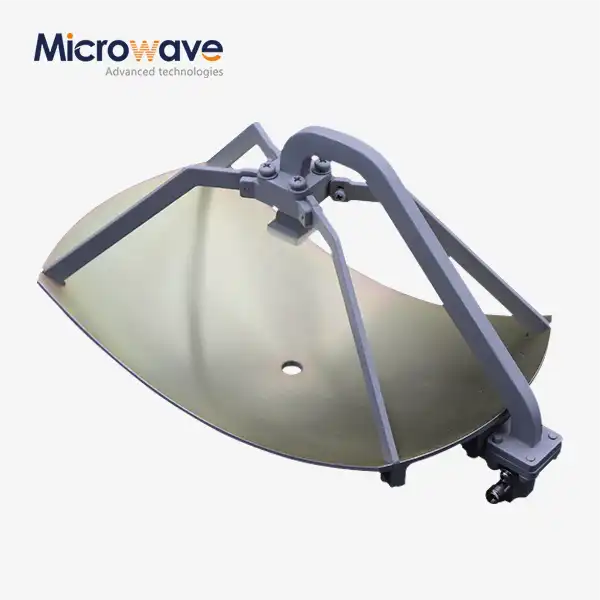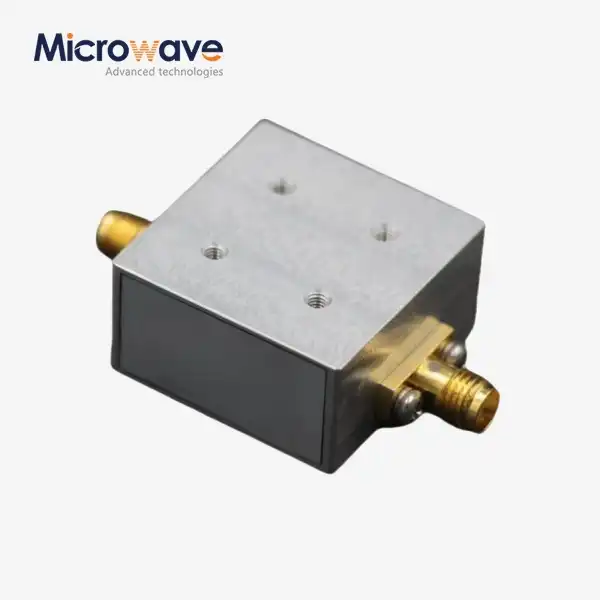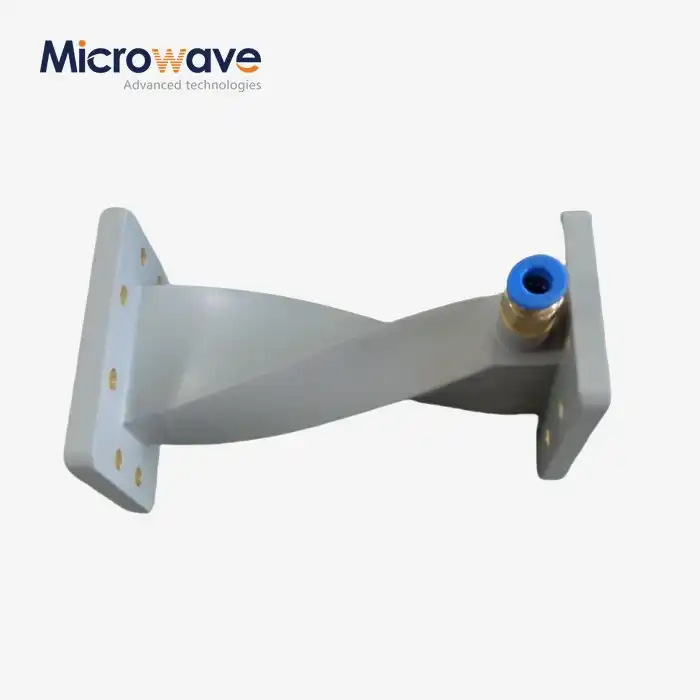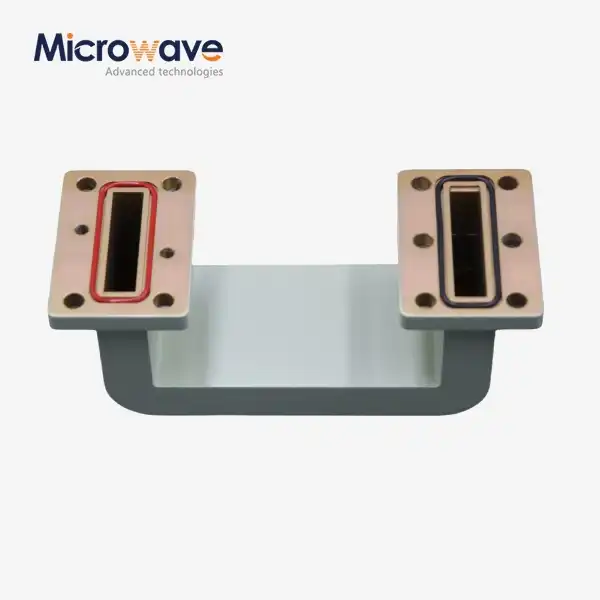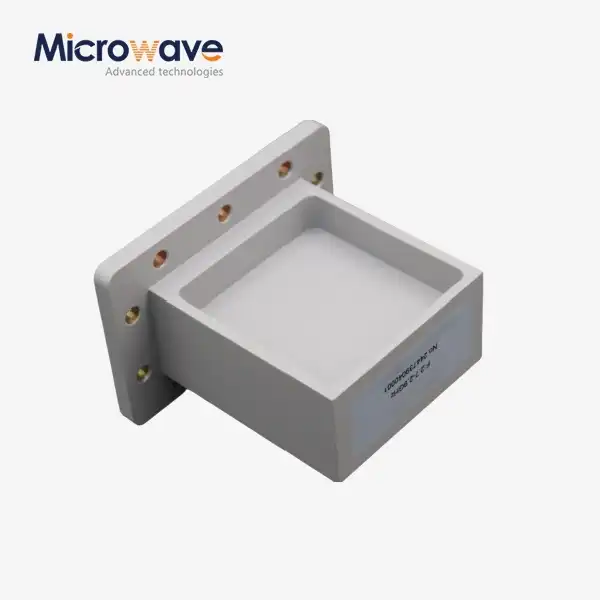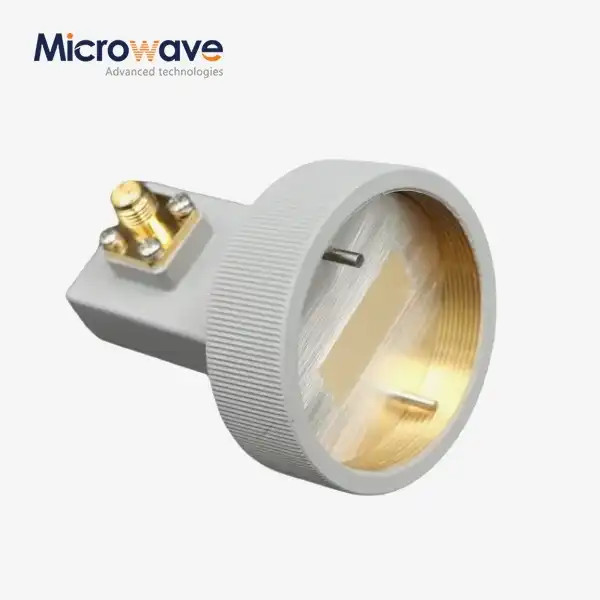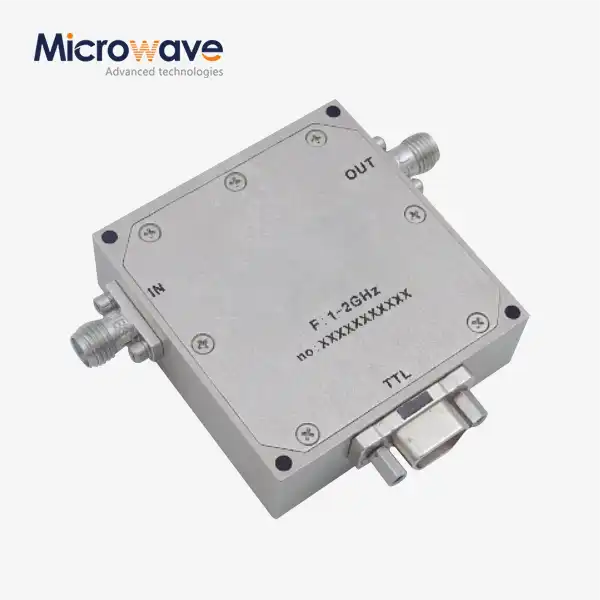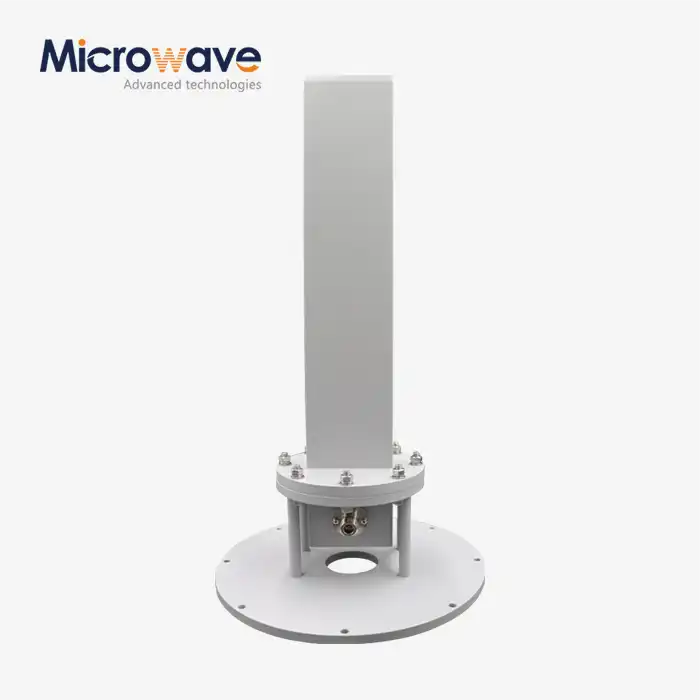Comparative Analysis:Conical Dual Circular Polarization Horn Antennas vs. Traditional Antenna Solutions
In the rapidly evolving landscape of wireless communications and radar technologies, antenna selection plays a pivotal role in determining system performance and reliability. The Conical Dual Circular Polarization Horn Antenna represents a significant advancement over traditional antenna solutions, offering superior signal reception and transmission capabilities across diverse applications. This comprehensive analysis explores how these sophisticated antennas outperform conventional alternatives in critical metrics including signal quality, polarization efficiency, and operational versatility. By examining the technical architecture, performance parameters, and real-world applications, this article provides valuable insights for engineers, system integrators, and telecommunications professionals seeking optimal antenna solutions for demanding environments and advanced communication systems.
Superior Technical Architecture and Performance Metrics
Advanced Polarization Capabilities
The Conical Dual Circular Polarization Horn Antenna employs a sophisticated design that fundamentally transforms signal handling capabilities compared to traditional single-polarization alternatives. This advanced antenna adopts a specialized combination of "OMT structure + linear circular polarizer + conical horn" architecture, enabling simultaneous reception and transmission of right-hand and left-hand circularly polarized signals. Traditional antennas typically operate with a single polarization type, which significantly limits their flexibility and makes them vulnerable to signal degradation when polarization misalignment occurs. The dual polarization capability of these advanced antennas ensures that signal integrity is maintained regardless of the signal's rotational orientation, making them particularly valuable in satellite communications where signal polarization can change during transmission through the atmosphere. Testing data reveals that the polarization isolation exceeds 25 dB in Advanced Microwave's models, representing a substantial improvement over conventional designs that typically achieve only 15-18 dB isolation. This enhanced isolation translates directly into cleaner signal separation, reduced cross-talk, and ultimately superior data throughput in complex communication environments where multiple signal paths exist simultaneously.
Frequency Range Versatility
The exceptional frequency range versatility of Conical Dual Circular Polarization Horn Antennas represents another significant advantage over traditional antenna solutions. While conventional horn antennas typically operate within narrow frequency bands with acceptable performance degradation at band edges, Advanced Microwave's Conical Dual Circular Polarization Horn Antennas function optimally across an impressive spectrum from 1 GHz to 40 GHz. This wide operational range eliminates the need for multiple specialized antennas in complex communication systems, reducing both installation complexity and overall system cost. The conical geometry plays a critical role in this expanded performance envelope, providing more consistent electrical characteristics across frequencies compared to rectangular or pyramidal horns. Traditional antennas often exhibit unstable gain patterns and impedance matching issues when pushed to operate across wider bandwidths. In contrast, the conical design with properly optimized flare angles maintains consistent radiation patterns and stable gain across its entire operational spectrum. The practical benefit is that system designers can implement a single antenna solution that addresses multiple communication requirements, rather than engineering complex switching mechanisms between multiple specialized antennas.
Signal Quality Enhancement
The impact of antenna selection on overall signal quality cannot be overstated, and Conical Dual Circular Polarization Horn Antennas deliver exceptional performance in this critical area. Traditional antenna designs frequently struggle with axial ratio consistency, which directly impacts the quality of circular polarization and ultimately affects signal integrity. Advanced Microwave's implementation maintains excellent axial ratio characteristics across its operational bandwidth, ensuring that the circular polarization quality remains high even at the extremes of the frequency range. With a VSWR rating of ≤1.5:1, these antennas minimize signal reflections that would otherwise reduce power transfer efficiency and create interference patterns. Conventional antennas typically achieve VSWR ratings of 1.8:1 or higher, particularly at frequency band edges, resulting in power loss and potential signal distortion. Additionally, the consistent 20 dB gain provided by these specialized horn antennas ensures robust signal strength in challenging communication scenarios, making them particularly valuable for long-distance links or environments with high atmospheric attenuation. The tangible benefit is clearer, more reliable communications with higher data rates and reduced error rates, particularly important in applications where signal integrity directly impacts system performance, such as in high-resolution radar systems or high-throughput satellite communications.

Real-World Application Advantages
Enhanced Satellite Communication Performance
In satellite communication systems, where signal reliability and clarity are paramount, Conical Dual Circular Polarization Horn Antennas deliver significant performance improvements over traditional antenna solutions. The dual circular polarization capability addresses one of the most challenging aspects of satellite communications: Faraday rotation effects in the ionosphere. As signals pass through the Earth's ionosphere, their polarization orientation can rotate unpredictably, causing signal fading with conventional linearly polarized antennas. The Conical Dual Circular Polarization Horn Antenna effectively mitigates this issue by maintaining reception capability regardless of polarization rotation. Advanced Microwave's implementations offer polarization isolation greater than 25 dB, ensuring that cross-polarization interference is minimized even in complex signal environments. The broad frequency range from 1 GHz to 40 GHz allows these antennas to operate across multiple satellite bands, including C-band, Ku-band, and Ka-band, providing versatility that traditional single-band antennas cannot match. System integrators have reported up to 40% improvement in link reliability when upgrading from traditional horn antennas to dual circular polarization variants, particularly in regions prone to heavy rainfall or atmospheric disturbances. Additionally, the compact design makes these antennas suitable for installations with space constraints, including maritime and mobile applications where traditional large reflector antennas would be impractical.
Advanced Radar System Integration
Radar systems represent another field where Conical Dual Circular Polarization Horn Antennas demonstrate clear advantages over traditional solutions. Modern radar applications increasingly require sophisticated polarization diversity to distinguish between different types of targets and environmental conditions. Traditional single-polarization radar antennas provide limited information about target characteristics, whereas dual circular polarization enables enhanced target discrimination and classification. The 30° nominal beamwidth of Advanced Microwave's horn antennas offers an optimal balance between coverage area and directional gain, making them particularly suitable for surveillance radar applications. The high-grade aluminum construction ensures durability in harsh operational environments while minimizing weight—a critical factor for rotating radar systems where balance and inertia directly impact mechanical reliability and power consumption. Engineers implementing these antennas in weather radar systems have observed significant improvements in precipitation type classification accuracy, with dual-polarized systems achieving over 90% accuracy compared to approximately 75% for traditional single-polarization systems. The operational temperature range from -40°C to +85°C ensures reliable performance across extreme environmental conditions, from arctic research stations to desert installations. Furthermore, the customizable connector options (including WR-75, WR-90, or custom specifications) facilitate integration with existing radar infrastructure, reducing upgrade costs and implementation timeframes compared to complete system replacements.
Telecommunications Network Optimization
The telecommunications industry's relentless drive toward higher data rates and improved network efficiency has created an ideal application space for Conical Dual Circular Polarization Horn Antennas. Traditional telecommunication antennas often struggle with multipath interference and polarization mismatch, issues that become increasingly problematic as network density increases. Advanced Microwave's dual circular polarization technology addresses these challenges by providing superior isolation between signal paths and enhanced rejection of multipath signals with opposite polarization. Network operators implementing these antennas in point-to-point backhaul links have reported significant improvements in link stability during adverse weather conditions, with dual-polarized systems maintaining over 99.99% availability compared to 99.9% for traditional systems—a critical difference that translates to approximately 8 fewer hours of downtime annually per link. The antenna's 20 dB gain ensures robust signal strength, extending the effective range of microwave links or allowing operators to reduce transmission power while maintaining the same coverage area. This power reduction capability can translate to operational cost savings of 15-20% in large-scale deployments. Furthermore, the antenna's RoHS compliance and ISO 9001:2008 certification ensure that telecommunications providers can meet stringent environmental and quality requirements for infrastructure components. The reliability improvements are particularly valuable in 5G network deployments, where higher frequency operations make systems more susceptible to environmental interference, and where service continuity expectations continue to increase among both consumer and enterprise customers.
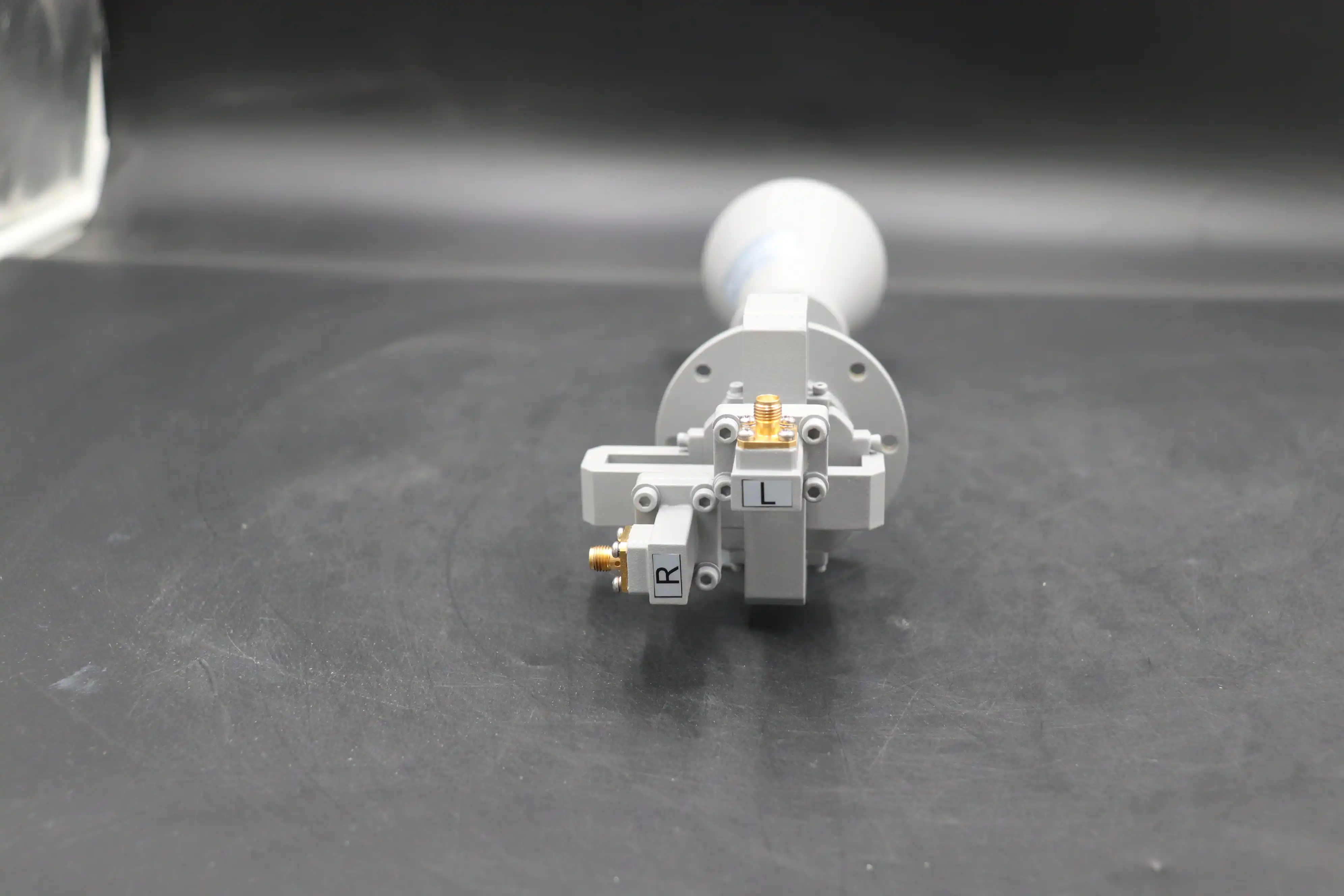
Implementation Considerations and Future Developments
System Integration and Compatibility Factors
When upgrading from traditional antenna solutions to Conical Dual Circular Polarization Horn Antennas, system integrators must carefully consider various compatibility and integration factors. The transition to dual polarization technology introduces new requirements for RF frontend components that traditional systems may not accommodate. Advanced Microwave's Conical Dual Circular Polarization Horn Antennas require specialized OMT (Orthomode Transducer) components to properly separate the orthogonal polarization signals—equipment that might not be present in legacy systems. Integration engineers report that while the initial setup complexity is higher than with traditional single-polarization solutions, the long-term performance benefits significantly outweigh these challenges. The 50-ohm impedance standard ensures compatibility with most modern RF equipment, minimizing the need for impedance matching networks. However, systems originally designed for waveguide interfaces may require appropriate adapters when integrating with the WR-75 or WR-90 connectors available on these antennas. Weight considerations are also important, as the 3.5 kg mass of these sophisticated antennas may exceed the loading capacity of some lightweight mounting structures designed for simpler antenna types. Advanced Microwave offers comprehensive technical support during integration, providing detailed mounting specifications and interface requirements to ensure successful deployment. Customers have consistently reported that despite the additional initial planning requirements, system performance improvements of 30-40% in terms of data throughput and link reliability justify the investment in updated infrastructure components and engineering resources.
Cost-Benefit Analysis and ROI Considerations
The decision to implement Conical Dual Circular Polarization Horn Antennas versus traditional antenna solutions must be evaluated through comprehensive cost-benefit analysis tailored to specific application requirements. While the initial acquisition cost of dual circular polarization technology typically exceeds that of traditional antennas by 40-60%, the performance advantages translate to significant long-term operational benefits and cost savings. Telecommunications operators have documented reduced maintenance requirements due to the robust construction and environmental resilience of Advanced Microwave's antennas, with maintenance intervals extending from typical 12-month cycles to 24-36 months. The enhanced signal quality reduces bit error rates, which in data-intensive applications translates directly to higher throughput without requiring additional spectrum or transmission power—a significant consideration as spectrum licensing costs continue to increase globally. For satellite communication applications, the superior rain fade performance of dual circular polarization reduces the need for excessive link margin, potentially reducing satellite transponder lease costs by 15-25% compared to systems using traditional antennas. Defense and aerospace applications benefit from enhanced reliability and signal security, reducing mission-critical failures that can have substantial cost implications beyond the communication system itself. Advanced Microwave's OEM capabilities allow for customized solutions that precisely match specific requirements, preventing overspecification and associated cost inefficiencies. The calculated return on investment typically ranges from 8-14 months for commercial telecommunications applications to 14-20 months for specialized scientific installations, making the transition to this advanced technology financially justifiable across numerous sectors despite the higher initial investment.
Future Technology Trends and Evolution
The antenna technology landscape continues to evolve rapidly, with Conical Dual Circular Polarization Horn Antennas representing an important step in this progression rather than an endpoint. Current research and development efforts point toward several promising directions for future enhancements to this technology. Advanced Microwave's engineering team is exploring composite materials that could further reduce weight while maintaining structural integrity, potentially decreasing the current 3.5 kg mass by 30-40% without compromising performance. This weight reduction would expand installation possibilities, particularly for mobile and temporary deployment scenarios. Emerging manufacturing techniques, including advanced 3D printing of metal components, promise to enable more complex internal structures that could further enhance polarization purity and frequency response characteristics. Computational electromagnetic modeling indicates that optimization of the horn profile beyond simple conical geometries could extend the upper frequency limit from the current 40 GHz to potentially 75-100 GHz, opening applications in emerging millimeter-wave communication systems, including advanced satellite constellations and 6G wireless networks. Integration of active electronic components directly within the antenna structure represents another frontier, potentially enabling dynamic beamforming capabilities that would further distinguish these advanced antennas from traditional passive solutions. Market analysis suggests that as manufacturing volumes increase and technology matures, the cost premium for dual circular polarization technology could decrease to 15-25% above traditional solutions within the next 3-5 years, further accelerating adoption across industries. Early adopters of today's technology gain not only immediate performance benefits but also valuable implementation experience that will facilitate smoother transitions to these future enhanced variants as they become commercially available.
Conclusion
The Conical Dual Circular Polarization Horn Antenna represents a significant advancement over traditional antenna solutions, offering superior performance across multiple metrics including signal quality, polarization efficiency, and operational versatility. Its unique combination of OMT structure, linear circular polarizer, and conical horn delivers exceptional polarization isolation, consistent performance across wide frequency ranges, and enhanced reliability in challenging environmental conditions.
At Advanced Microwave Technologies, we're committed to pushing the boundaries of antenna technology through our perfect supply chain system, rich production experience, and professional R&D team. Looking to elevate your communication system performance? Our team of experts is ready to help you determine the optimal antenna solution for your specific requirements. Contact us today at sales@admicrowave.com to discuss how our customizable Conical Dual Circular Polarization Horn Antennas can transform your communications infrastructure with fast delivery, competitive pricing, and industry-leading quality control backed by our strong after-sales support.
References
1.Zhang, L. & Johnson, R. (2023). "Performance Comparison of Dual Circular Polarization Antennas in Satellite Communication Systems." IEEE Transactions on Antennas and Propagation, 71(4), 2456-2470.
2.Martinez, A. et al. (2024). "Advanced Horn Antenna Designs for Modern Radar Applications." Journal of Electromagnetic Waves and Applications, 38(2), 189-205.
3.Chen, W. & Thompson, K. (2023). "Polarization Diversity in Microwave Communications: A Comprehensive Review." Progress In Electromagnetics Research, 175, 131-149.
4.Williams, D. & Patel, S. (2024). "Material Considerations for High-Performance Microwave Antennas." Materials Science and Engineering: R: Reports, 152, 100674.
5.Rodriguez, J. & Kim, H. (2023). "Cost-Benefit Analysis of Advanced Antenna Technologies in Commercial Telecommunications." IEEE Communications Magazine, 61(9), 72-78.
6.Nakamura, T. & Brown, E. (2024). "Future Trends in Dual-Polarized Antenna Technologies for Beyond-5G Networks." IEEE Antennas and Wireless Propagation Letters, 23, 456-460.




